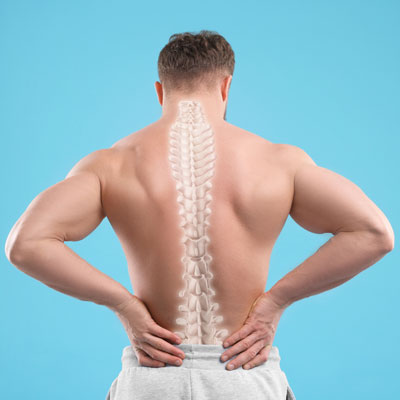9 Types of Migraines and How Chiropractic Care Can Help

Chronic headaches affect a large percentage of the population, with an estimated 1 billion people worldwide suffering from them each year. Many people are unaware that they suffer from migraines—they may believe that only severe headaches, eye strain, or digestive discomfort are symptoms of the condition. A migraine can be experienced in the following nine ways:
#1. Classic Migraine
A typical migraine is characterized by aura, which is a symptom that occurs in sensory perception prior to the onset of the migraine. This manifests as a severe headache as well as potentially dizziness, ringing in the ears, visual abnormalities (spots, lights, zigzag lines) and light sensitivity. Migraines without aura may cause feelings of tiredness or irritability with no sensory changes or disturbances, along with nausea and vomiting or speech difficulties (aphasia).
#2. Ocular Migraine
Ocular migraines are relatively uncommon, with one eye losing vision for a brief period of time (typically less than 60 minutes). A typical migraine may also impact eyesight, although this is more common in both eyes.
#3. Silent Migraine
A silent migraine is a type of headache that has symptoms similar to those of a classic migraine, yet without the associated pain. A silent migraine may be difficult to detect, especially if it happens frequently and is considered “normal.” Silent migraines can manifest as mood swings, intense food cravings, inexplicable tiredness, neck stiffness, and digestive difficulties.
#4. Hemiplegic Migraine
Hemiplegic migraines are uncommon and are sometimes mistaken for a stroke. Hemiplegic headaches can cause significant muscular weakness and limb paralysis, severe throbbing pain, numbness or tingling in the hand and arm, loss of balance and coordination, as well as dizziness. Digestive upset, including nausea and vomiting may also occur.
#5. Vestibular Migraine
Vertigo and dizziness are common symptoms of vestibular migraines. A vestibular migraine may not include a headache (but it will differ from a silent migraine in that the symptoms are focused on loss of balance, dizziness, disorientation and confusion, and digestive problems).
#6. Menstrual Migraine
Menstrual migraines are a severe form of headaches that affect one in ten women worldwide. They’re linked to hormonal changes, such as during pregnancy or the menstrual cycle. The occurrence of menstrual migraines can be triggered by a variety of factors, including birth control pills, hormone replacement therapy, menopause, pregnancy, or regular menstruation. Headache and digestive problems are common symptoms; throbbing head pain and sensitivity to light and sound may or may not be experienced.
#7. Abdominal Migraine
Abdominal migraines are a type of migraine that is characterized by abdominal pain, cramps, lethargy, and tiredness rather than a headache. Instead of a headache, abdominal migraines are generally accompanied by nausea, stomach discomfort, muscular aches and pains, fatigue and exhaustion, and loss of appetite. Abdominal migraines are most common in youngsters but can also affect adults.
#8. Basilar Migraine
Basilar migraines are accompanied by a brainstem aura, which affects vision and balance. Brainstem auras can produce double sight, vertigo, and lack of coordination.
#9. Cyclic Migraines
Cyclic migraines go through cycles. The majority of people who have cyclic migraines experience 10 attacks each month. Their migraines will last for up to two days and then disappear for 1 to 6 weeks at a time.
How Chiropractic Care Can Help
While migraines and migraine headaches have yet to be scientifically diagnosed, there currently exists no medical cure. Individuals who suffer from chronic migraines typically take prescription medicines or over-the-counter drugs as directed in order to prevent or treat the earliest symptoms of a migraine (called premonitory symptoms).
The premonitory stage of a migraine may go unnoticed by sufferers, who can train themselves to detect symbols such as stiffness in their neck, lethargy, yawning, or increased urination days before a typical migraine attack. Unfortunately, this might be a tough burden to bear; chronic migraine patients may miss appointments and events because they are too sick to deal with the pain and discomfort that migraines cause.
Chiropractic is not only able to reduce migraine frequency and severity, but it can also alleviate other symptoms associated with the condition. While the precise mechanism by which chiropractic therapy alleviates migraines is unknown, it is understood that chiropractic therapy may help chronic migraine sufferers a lot.
Chiropractic BioPhysics®
Postural correction (adjustments, spinal traction, Chiropractic BioPhysics®) or manual manipulation of muscle and tissue (craniosacral therapy, myofascial trigger point therapy, soft tissue release) are examples of migraine treatment therapies utilizing chiropractic care.
Some people are more prone to migraines than others, but the causes of migraines are many. Changes in air pressure and altitude, dehydration, sleep deprivation, alcohol, strong food, and chemical scents are among them.
Chiropractic therapy is a multidisciplinary approach to treating a variety of imbalances in the body. In addition to correcting spinal misalignments, chiropractic therapy can also reduce tension in muscles, ligaments, and tendons that have been overused or sprained. Chiropractic treatment can help regulate the brain and nervous systems as well as relieving headaches, sensory symptoms, and nerve discomfort.
Chiropractic care can help to increase the body’s immune function by breaking down blockages in the body and promoting blood and lymph circulation, which aids in the removal of waste. Chiropractic treatment can also enhance CSF flow, which helps to deliver elements such as minerals and oxygen to the brain while also removing cellular debris.
Chiropractic care is a powerful treatment for chronic migraine sufferers because it addresses so many disorders at the same time in a holistic and comprehensive way. Chiropractic therapy, as a whole, aids in the reduction of inflammation throughout the body, restoration of proper neuronal function and connection, release of tight and over-stressed muscular regions of the body, and support for mobility.
If you are suffering from chronic headaches, it’s time to book your appointment at SpineWorks Chiropractic. Your expert chiropractor Dr. Luc Archambault will undertake a comprehensive examination to assess your symptoms, lifestyle triggers, and the most effective ways to support your body in order to help you achieve your greatest level of health, vitality, and comfort.






